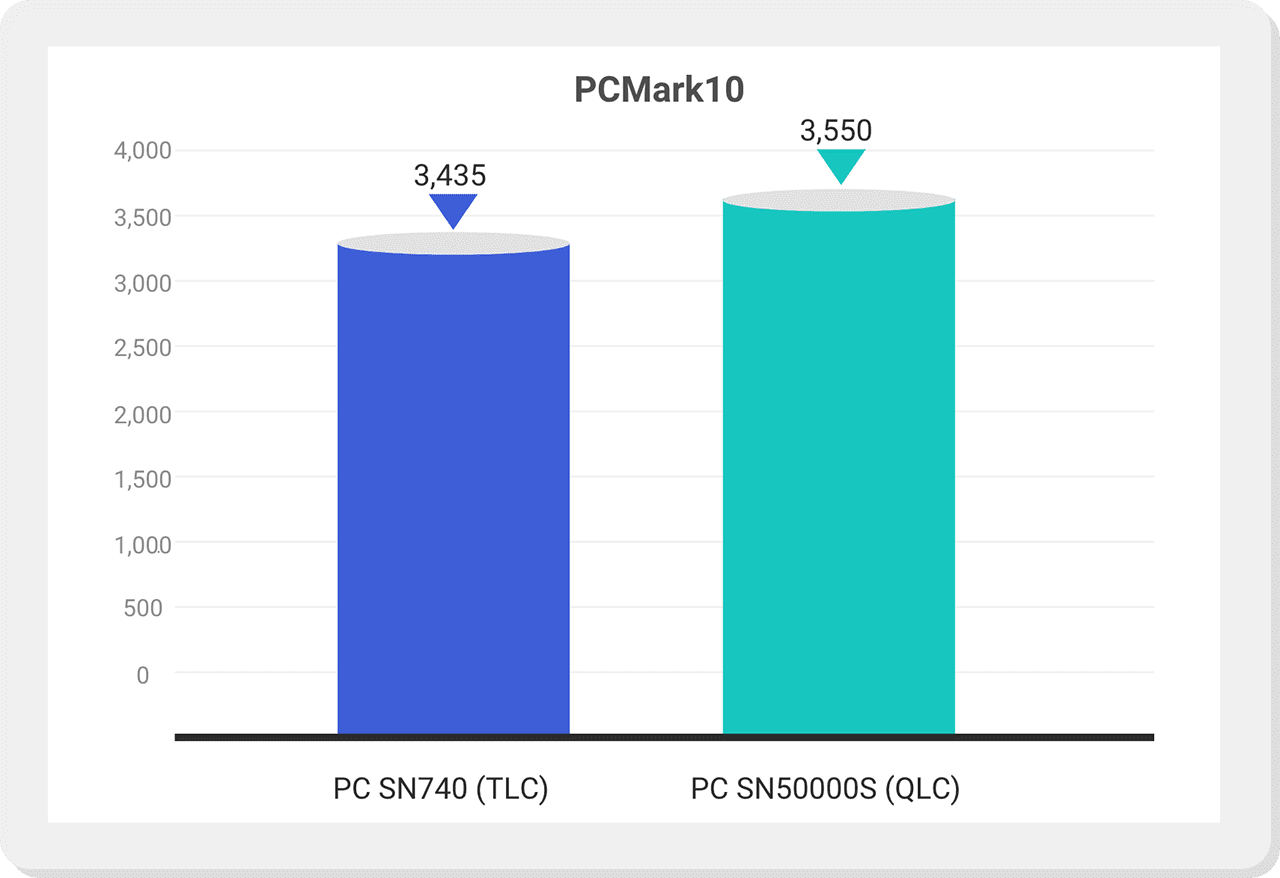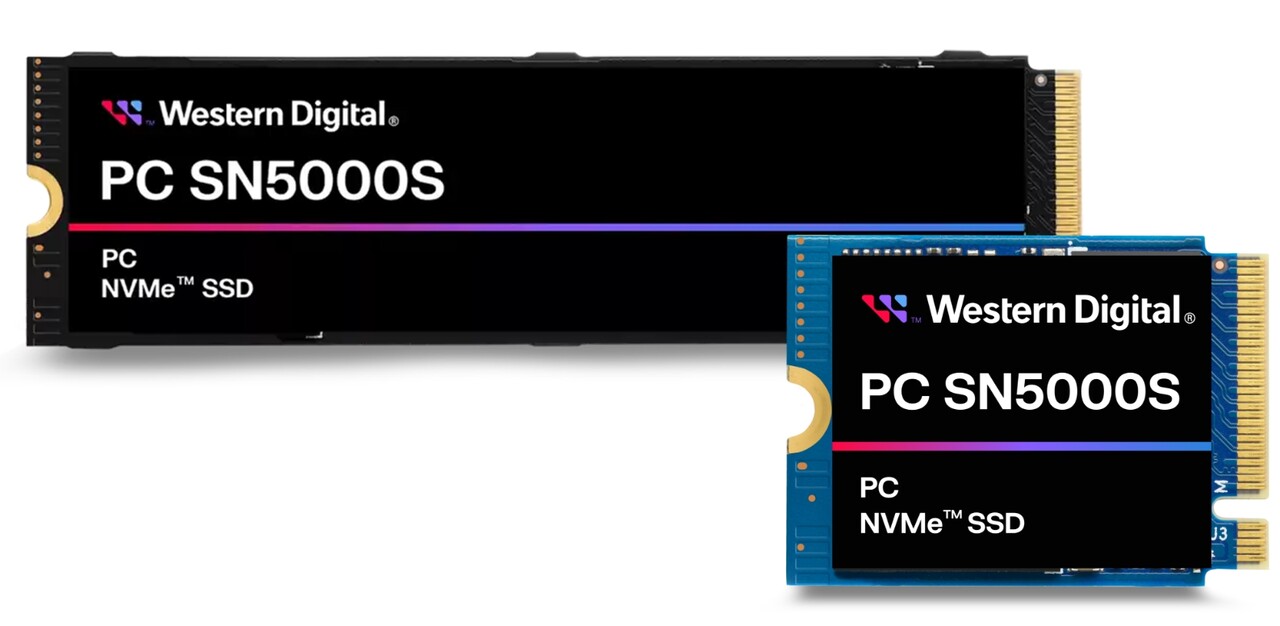QLC sin renunciar a nada
Descubre cómo Western Digital Innovation™ ofrece una densidad de bits mejorada sin sacrificar el rendimiento en todos los discos QLC, como el nuevo Western Digital PC SN5000S NVMe™ SSD.
Más información sobre QLC
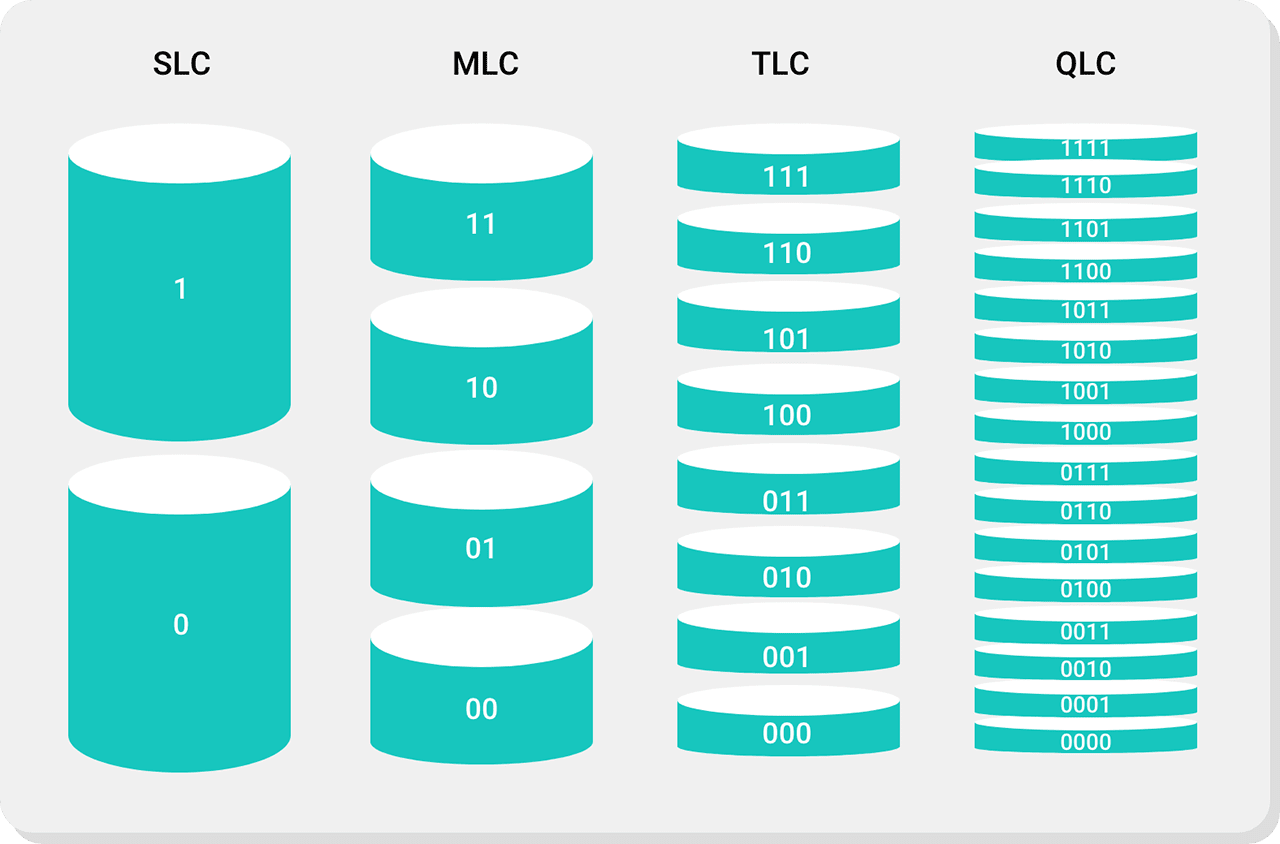
QLC frente a TLC
Tanto QLC como TLC son importantes en el almacenamiento de datos.
Para los OEM y otras partes interesadas, el enfoque correcto depende de las ventajas de cada tecnología, y los mejores resultados para los usuarios dependen de saber cómo se comparan QLC y TLC.

Mayores capacidades
QLC aumenta la densidad de almacenamiento al almacenar cuatro bits por celda, ofreciendo más espacio que los tres bits por celda de TLC.

Asequibilidad
QLC proporciona más almacenamiento por celda que TLC a un menor coste, lo que hace que las soluciones de alta capacidad sean más accesibles.

Ventaja de lectura intensiva
QLC destaca en aplicaciones de lectura intensiva, como la revisión de grandes colecciones de contenido y la gestión de cargas de trabajo empresariales exigentes.

Ventajas e inconvenientes equilibrados
Western Digital Innovation ha ayudado a ofrecer los beneficios de capacidad de QLC a la vez que gestiona su resistencia y rendimiento tradicionalmente más bajos.
¿Quién puede beneficiarse de QLC?
Si almacenas datos, QLC puede resultar útil, pero QLC ayuda a los OEM en particular. Los OEM (fabricantes de equipos originales) trabajan arduamente para ofrecer dispositivos capaces y rentables para sus usuarios, tanto si esos usuarios gestionan aplicaciones empresariales como si organizan su contenido familiar.
Con la tecnología flash NAND de QLC, los OEM pueden ofrecer aún más capacidad a sus usuarios. Solo necesitan invertir en flash QLC que pueda equilibrar la densidad de bits aumentada con un rendimiento de primera calidad.
¿Por qué es importante QLC?
QLC puede almacenar más bits por celda de memoria que TLC, MLC o SLC NAND flash. Esto significa que permiten más capacidad de almacenamiento en la misma área total que las celdas anteriores, lo que reduce el coste total por GB.
A medida que los usuarios generan más contenido, almacenan más datos y consumen más información, necesitamos formas de aumentar la capacidad y hacerlo de manera rentable. Con QLC, los dispositivos de almacenamiento como los SSD pueden ayudar a almacenar más sin aumentar su tamaño físico gracias a la densidad de bits mejorada.
Explorar QLC para OEM
Los OEM esperan que más del 50 % de los SSD para clientes utilicen QLC para 2026.1
Los usuarios generan más contenido, comparten más elementos audiovisuales y guardan más datos. Para los fabricantes de equipos originales que crean dispositivos para consumidores y usuarios empresariales, QLC puede ayudar a ofrecer capacidades más altas en el mismo espacio a un menor coste por GB.
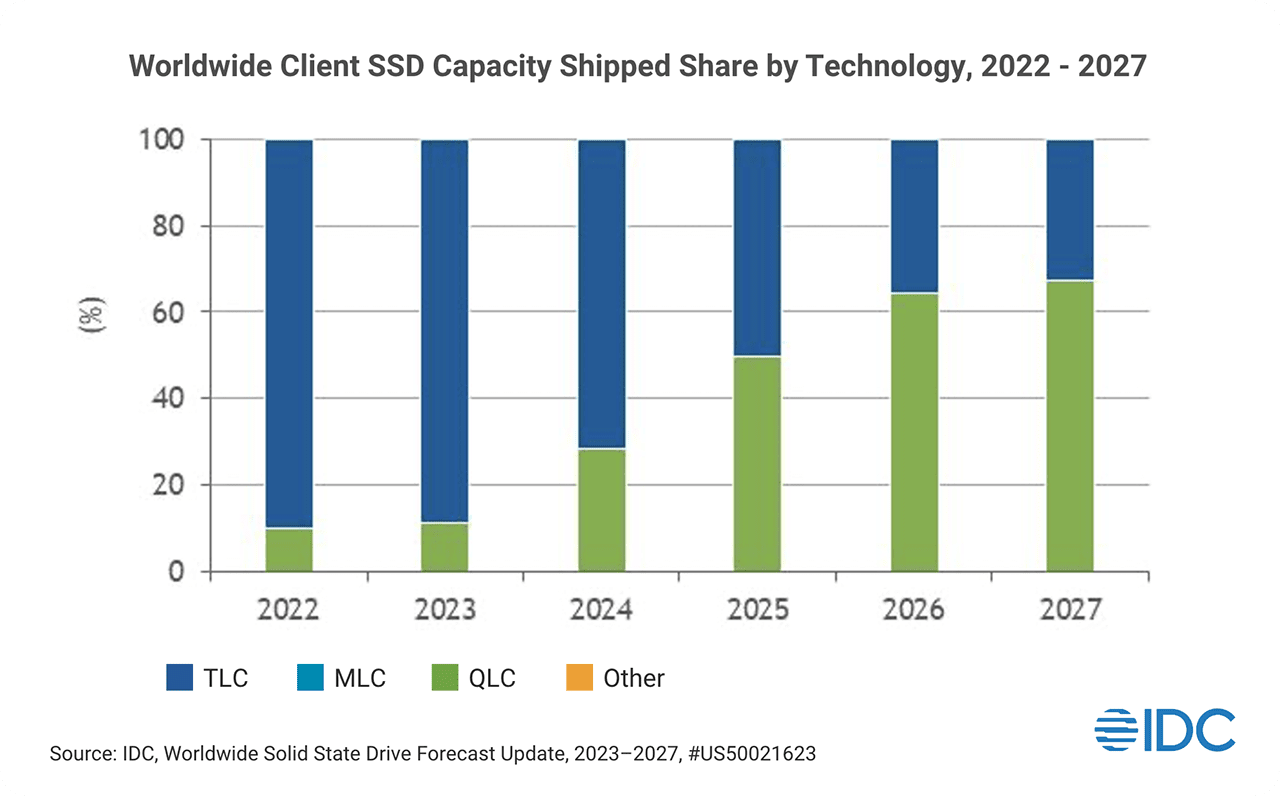
Los OEM pueden optimizar QLC con nCache 4.0 de Western Digital.
Más bits y mayores velocidades de datos requieren una arquitectura más compleja para mejorar la retención, el rendimiento y la resistencia de los datos. La nCache patentada de Western Digital puede ayudar, aquí se explica cómo:
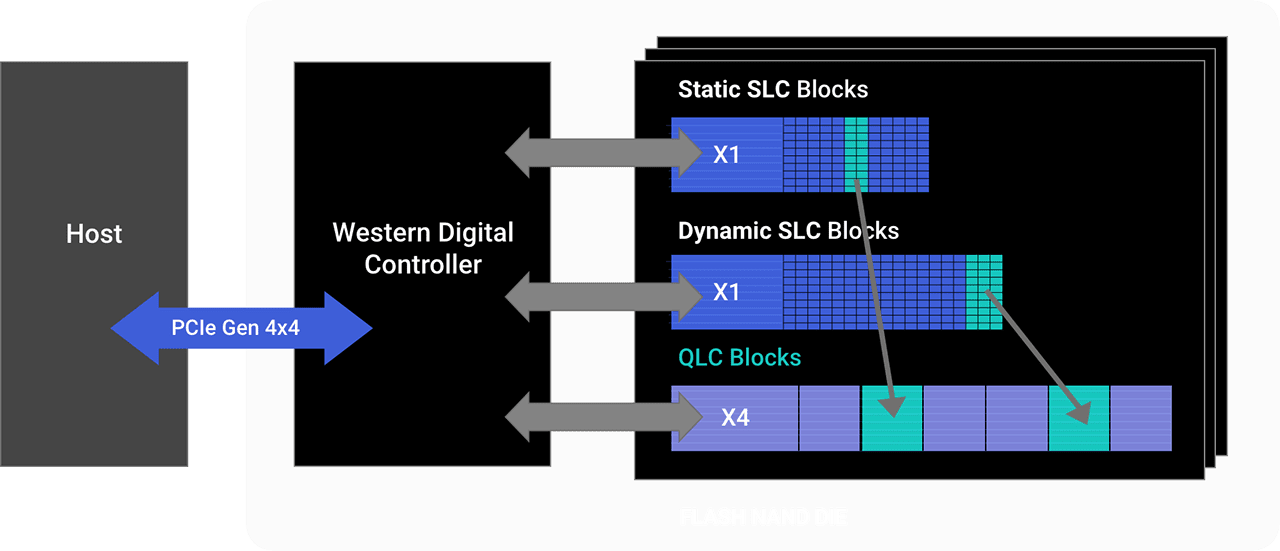
Velocidad y capacidad
nCache 4.0 de Western Digital cuenta con tecnología SLC dinámica, que escribe datos a altas velocidades en bloques SLC antes de copiarlos en QLC durante el tiempo de inactividad.
Almacenamiento en caché inteligente
Al gestionar de forma inteligente cómo se escriben los datos en el disco, nCache 4.0 de Western Digital ayuda a prolongar la vida útil de los SSD QLC. Esto minimiza el desgaste de las celdas de memoria y ayuda a mantener los datos más seguros durante más tiempo.
Diversos casos de uso
Tanto si estás creando contenido como trabajando en tu próximo proyecto profesional, nCache 4.0 de Western Digital ofrece un rendimiento de alta velocidad con grandes capacidades.
Capacidad rentable
nCache 4.0 de Western Digital junto con QLC se traduce en discos más asequibles y de mayor capacidad, lo que permite a los usuarios almacenar más sin comprometer el rendimiento.
Descubre SSD QLC
¿Tienes preguntas sobre QLC?
Ponte en contacto con un experto para obtener más información sobre QLC para tu equipo.
Avisos legales
1. Fuente: IDC, Actualización de previsión de discos de estado sólido a nivel mundial, 2023-2027, #US50021623
2. En función de pruebas internas. Western Digital PC SN5000S Gen 4.0 (BiCS6 QLC) frente a Western Digital PC SN740 Gen 4.0 (BiCS5 TLC).
3. Según las velocidades de lectura, a menos que se indique lo contrario. 1 MB/s equivale a un millón de bytes por segundo. 1 GB/s = mil millones de bytes por segundo. En función de pruebas internas. El rendimiento puede variar en función del dispositivo, las condiciones de uso, la capacidad del disco y otros factores.
4. Comparación basada en el modelo Western Digital PC SN740 de 2 TB.
Las especificaciones de los productos están sujetas a cambios sin aviso previo. Las imágenes mostradas pueden diferir del producto real.
Western Digital, el diseño de Western Digital, el logotipo de Western Digital y nCache son marcas comerciales registradas o marcas comerciales de Western Digital Corporation o sus filiales en los EE. UU. u otros países. NVMe es una marca comercial registrada de NVM Express, Inc. PCIe® es una marca comercial registrada de PCI-SIG. TCG Opal es una marca comercial de Trusted Computing Group. Todas las demás marcas comerciales son propiedad de sus respectivos propietarios.
